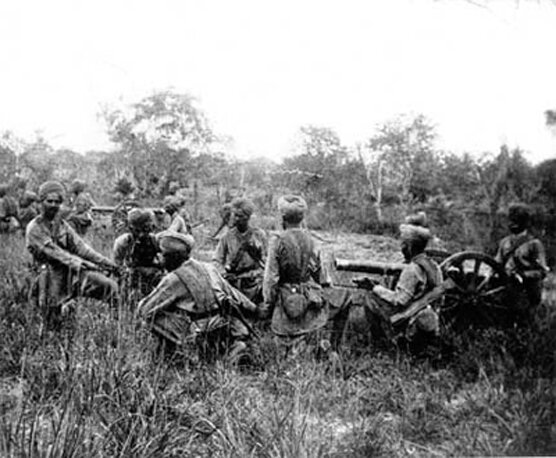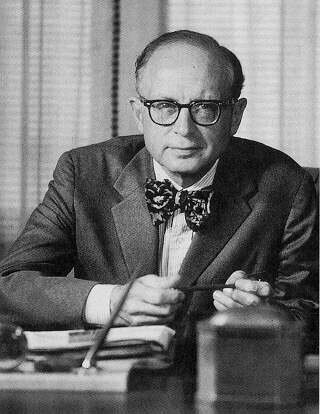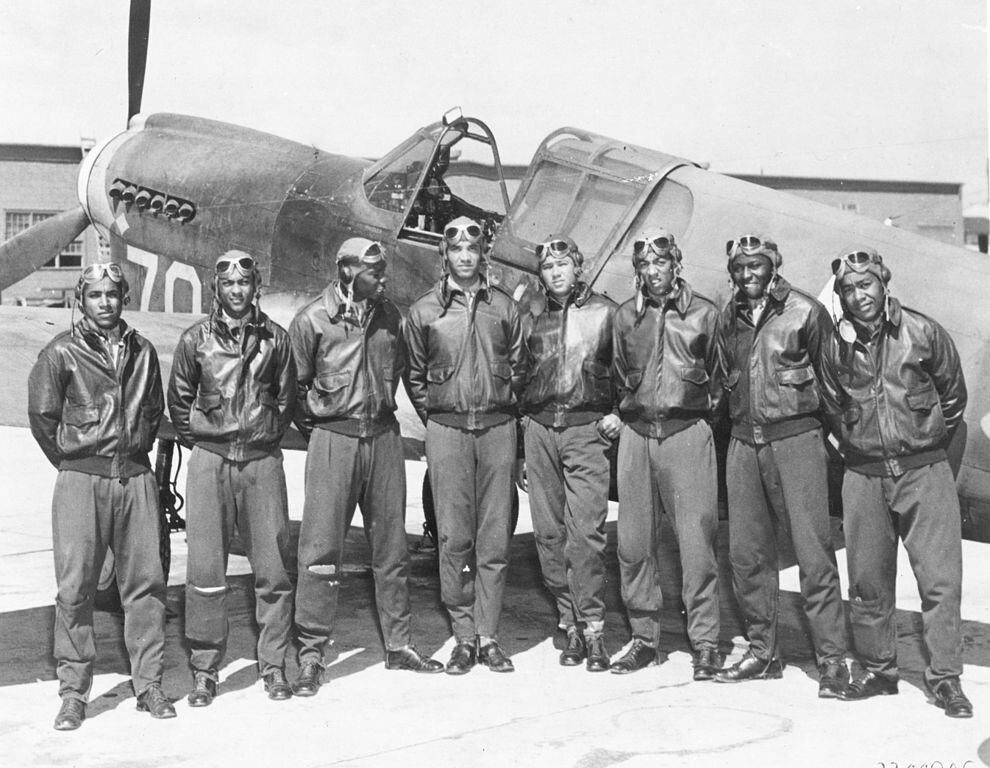In 1920 Britain was granted an official Mandate by the League of Nations to administer the country of Iraq - and ultimately allow it to achieve independence.
The whole affair, which lasted from the end of the First World War to independence in 1932, was largely a failure, with few flattering accounts and obligations often unfulfilled. It is from this point in time that the first underlying signs of declining British power are evidenced, while for Iraq it set a path to a fraught and unstable future.
Steve Prout explains.
King Faisal I of Iraq.
The War and Occupation
The British presence had been building up in Iraq since 1914 when her forces had removed the Ottomans from the region with domestic support. As soon as the British had expelled the Turks they were making encouraging noises that raised Iraq’s hopes of independence.
The British, in the words of General Maude and High Commissioner Percy Cox, implied loudly that they came as liberators. This was welcomed by Iraq, which already had nationalistic aspirations and expectations were raised.
The Ottomans previously allowed levels of autonomy to many areas of Iraq and the noises from the British were encouraging, but what followed was very different and did little to assuage growing Iraqi concerns as the British occupation continued.
The Post War Mandate
The League of Nations appointed the mandate to Britain in 1920 to run Iraq and lead her on the path to self- determination. In retrospect it resembled a poorly disguised colonialism.
Iraq offered a geographically strategic position as a potential overland route from Egypt through the Middle East to South East Asia. Iraq filled a gap of land in the middle of a long run of British possessions. It would provide a useful alternative to the long and arduous sea lanes that had been threatened by submarine warfare.
There was also an urgent need to offset the cost of the war that Britain bore in the region. The overland route would be safer, quicker, and - more importantly - cheaper as there would be less demand on oil from the navy. Whether this theory was correct or not, the later revolt and the cost of suppressing it made the economic debate moot. By the end of 1920 Britain could see further lost opportunities as her plans to monopolize the oil reserves also met US resistance and generated a reversal of policy.
Nevertheless, another possession in the oil rich region at the time could enhance Britain’s international leverage, and counter French and Russian influence in the region (in May 1920 the Red Army invaded Northern Persia further fuelling Bolshevik expansionist fears).
Now Britain had the mandate it was the India Office that provided the administration to mobilize it. It imposed a very prevalent British presence in all aspects of Iraqi life – that would prove very unpopular.
The Uprising
The uprising that occurred in Iraq in 1920 was fuelled by an unrelenting nationalism that was growing years before the British presence whilst under Ottoman rule. The very loud and public promises made by the British during the war now looked like they were going to be unfulfilled. Arnold Wilson and other British high commissioners treated peaceful petitions and representatives in a high-handed and often dismissive manner, which no doubt irked these nationalists.
The various tribes were treated inconsistently, controversial taxes were established, and a questionable plebiscite was orchestrated that favored a British outcome. Much of the country was resentful, as they felt excluded from political decisions. The India Office imposed colonial rules on all aspects of life that felt more restrictive than that of the Ottomans.
The British responded to the uprising by deploying the full force of the military, with Royal Air Force (RAF) support. Despite the belief that Churchill was an advocate of the use of poison gas, this was not deployed but the use of the air-force’s bombing tactics was no less brutal than that used by Italy in Abyssinia against poorly equipped tribes. It was all over very quickly by the end of the year, but it was not an easily fought campaign for the British.
The British had far superior forces at their disposal with the presence of the RAF. This should have put them at a far greater advantage than the less well-equipped tribes. The revolt was suppressed in a few short months after a brutal response that cost 10,000 Iraqi lives, the bombing of mosques and the burning of villages. There were also defeats and retreats that bloodied the nose of this huge Imperial force. Humiliating examples were the seizing of HMS Firefly and her artillery by the tribes who turned the arsenal on the British and the retreats from Karbala and Najal (to name but two). It was a humiliating situation for a Great Power.
After counting the cost of the revolt and the continued strain on the finances, Britain began to urgently push for Iraqi independence. When the final tally was counted the uprising cost the exchequer circa £40m and the continued occupation of Iraq would cost circa £20m per annum. Policy now had to change. There was then an interim approach in Iraq in the meantime - and that was in the form of a democratic offering of sorts.
The Veneer of Democracy
It was clear that military intervention would not be enough to keep a sustained peace. The British needed a friendly Iraqi government that they could still influence and control in the background, whilst at the same time creating a veneer of a democratic government. In 1921 that friendly pro-British ruler took the form of King Faisal, a man who was in favor with the British for his support during the war. After his expulsion by the French for his attempt to establish power in Syria he took an offer by the British to head up a ruling government in Iraq. Faisal was not representative of the varied and diverse population - and it would not satisfy the underlying tensions completely.
Meanwhile, the British, with successive high commissioners over this period, still pulled the political strings. Faisal’s new government was shored up by 300 Ottoman officers who fought for his side in the Great War, but a large proportion of the population was still left ignored and dissatisfied. This discontentment would still bubble under the surface long after the 1932 independence. Iraq was never going to be the stable state that Britain promised under the auspices of the League of Nations.
Economic Concessions
There are several views on Britain’s intentions with the oil and petroleum reserves that Iraq had. David Lloyd George wanted to monopolize the oil and petrol reserves for British interests as there was a dependency on US and Mexican oil that was embarrassing to Britain - despite having an abundant and sufficient source with The Turkish Petroleum Company.
This stance would soon change from a monopolistic policy to one of an open free market by allowing US investment. There were other ways that the oil could serve British interests and that did not necessitate having a monopoly.
The oil revenues would financially support the objectives of the mandate and offset the economic liability she had undertook. Iraq’s own resources would be used but when it came down to the bare facts the Iraqi nation would have no voice in how their own natural resources would be used.
The Conclusion – An empire in decline and a new nation broken
Before the war Iraq was modernizing and progressing into the Industrial world. The building of the Suez Canal had opened her grain and wool markets to the world. There was German and British interest in her vast petrol reserves as early as 1907. The war and the Mandate era had set her far back.
Although Britain was not the originator of the nationalistic fervor it was her heavy handed and brutal response that did little to help Iraq’s future unity and stability, as King Faisal would later comment in his memoirs.
There were ominous signs for Britain also. The Empire was dangerously over-stretched, and cracks were now appearing in Ireland and India as well as Iraq. Although the idea of Empire was still something the British were proud, other priorities were becoming more apparent on home shores.
On paper the revolt should have not been as troublesome to suppress for a Great Power such as Britain, with the power of the RAF and mechanized divisions at her disposal to fight the local tribes. Considering the resources, the British had this was not an easily fought campaign, possibly a sign of waning military strength.
The drain on the British Exchequer was not insignificant and the economic situation was bleak at the time. This was something the public purse could not tolerate as Britain had over one million unemployed, the large majority being de-mobilized servicemen. By 1921 unemployment had risen to over two million with several major strikes taking place. There was no room for troublesome additions to an already troubled Britain.
All these factors contributed to a less that half-hearted commitment to Iraq. By 1932 a poorly produced independence was handed over. There were no winners or favorable outcomes for Iraq but for Britain that small snippet of history held so many signs of the beginnings of imperial decline.
What do you think of the British Empire and Iraq? Let us know below.
References
David E Omissi – Air Power and Colonial Controls, Manchester University Press 1990
Dr Toby Lodge – The British Mandate in Iraq 1914-32, Institute for Strategic Studies
Amal Vinograv – The 1920 Revolt in Iraq Reconsidered, Cambridge University Press, International Journal of Middle Eastern Studies 1972
William Shrivers - International Politic and Iraqi Oil 1918-1928, Business History Review 1981 (Pages 517-540)
Judith Yaphe – War and Occupation in Iraq: What Went Right, What Went Wrong? Middle Eastern Journal 2003, Middle East Institute




















